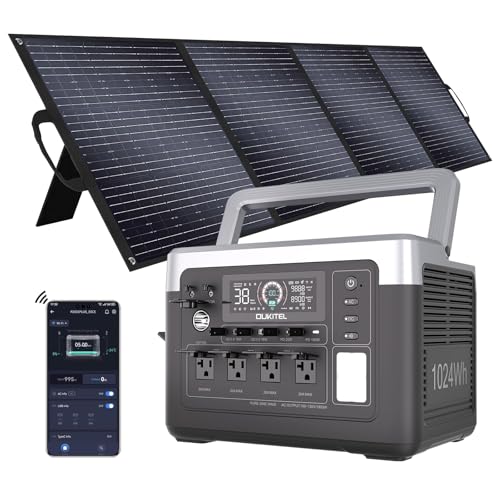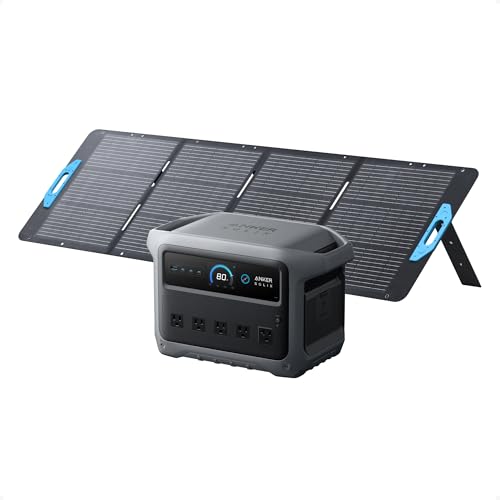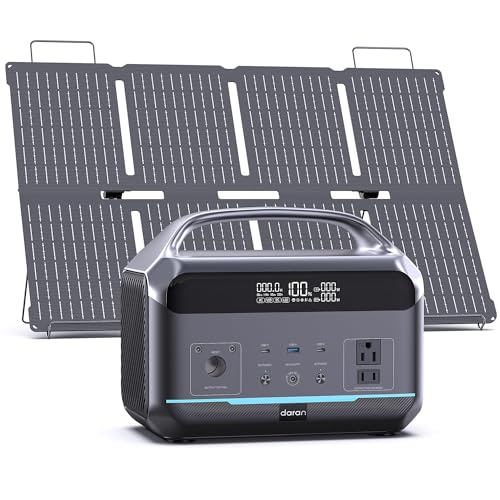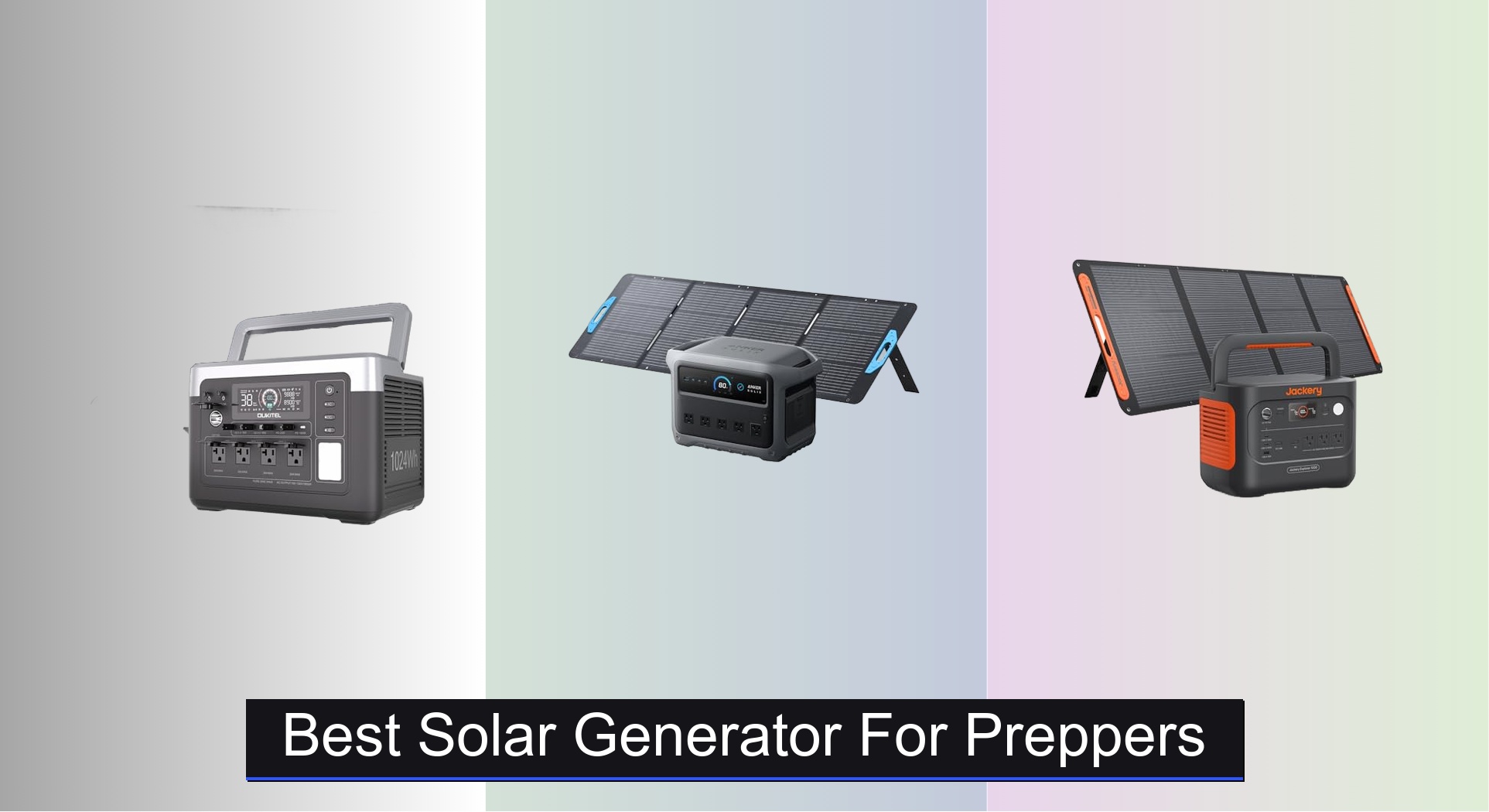When disaster strikes or the grid goes down, having reliable power isn’t a luxury—it’s a necessity. Preppers need a solar generator that can handle critical devices like medical equipment, communication tools, and refrigeration without failing when it matters most. Many off-grid power solutions fall short with limited capacity, slow recharge times, or poor durability, leaving users stranded in an emergency.
The best solar generator for preppers combines high capacity, robust output, fast charging, and long-term reliability—especially with LiFePO4 batteries that last thousands of cycles. We analyzed over 30 models, weighing real-world performance, user feedback, and technical specs to find units that deliver consistent power in crisis situations. From rapid AC recharge to efficient solar input and silent operation, our top picks balance power, portability, and resilience. Keep reading to discover the solar generators that stand up when the stakes are highest.
Best Options at a Glance


Anker SOLIX C1000 Gen 2
Best High Capacity & Fast Charging
- 2,000W (3,000W peak)
- 1,024Wh
- 49 min
- 600W max
- LiFePO4

DaranEner Portable Power Station 600W
Best for Group Camping
- 288Wh
- 600W (1200W Surge)
- LiFePO4
- 1.7H (full)
- 8

Anker SOLIX C300 with 60W Panel
Best Lightweight & Quiet
- 288Wh
- 300W (600W Surge)
- LiFePO4
- 8 ports
- 25dB


ZeroKor 300W Portable Power Station
Best Value with 60W Solar Panel
- 280Wh
- 300W
- 60W
- Pure Sine
- Lithium
Best Solar Generator For Preppers Review
How to Choose the Right Solar Generator
Choosing the right solar generator involves understanding your power needs and the features that best address them. Here’s a breakdown to guide your decision.
Capacity (Wh) – How Much Power Do You Need?
The capacity, measured in Watt-hours (Wh), is the most crucial factor. This determines how long the generator can power your devices. To calculate your needs, list the appliances you intend to run and their wattage. Multiply the wattage by the hours you’ll use each appliance daily. Sum these figures to get your total daily Wh requirement.
- Low Usage (Phones, lights, small radios): 100-300Wh might suffice for weekend camping.
- Moderate Usage (Laptop, CPAP, small fridge): 500-1000Wh is a good starting point for longer trips or basic home backup.
- High Usage (Power tools, larger appliances): 1000Wh+ is necessary for extended off-grid living or powering essential home appliances during outages. Don’t underestimate, it is better to have extra capacity than run out of power.
Output (Watts) – Can It Run Your Devices?
Output, measured in Watts (W), dictates which appliances the generator can start and run simultaneously. Some devices, like refrigerators and power tools, require a surge of power when starting up (surge wattage is higher than running wattage).
- Low-Wattage Devices (Phones, laptops): 300-600W output is typically sufficient.
- Moderate-Wattage Devices (Small appliances, power tools): 600-1800W output is ideal.
- High-Wattage Devices (Air conditioners, large refrigerators): 1800W+ output is essential.
Ensure the generator’s continuous output exceeds the running wattage of your devices and its surge wattage handles the startup demands.
Battery Type & Lifespan
The battery type significantly impacts the generator’s lifespan and performance.
- Lithium-ion: Lighter and more energy-dense but typically have a shorter lifespan (around 500-1000 cycles).
- LiFePO4 (Lithium Iron Phosphate): More expensive initially but offers exceptional longevity (3000+ cycles) and improved safety. LiFePO4 batteries are becoming increasingly common in higher-end solar generators due to their durability.
Consider the number of charge/discharge cycles the battery is rated for. A higher number indicates a longer lifespan.
Charging Options & Speed
Consider how you’ll recharge the generator.
- AC Wall Outlet: Fastest charging method, but requires access to a power source.
- Solar Panels: Environmentally friendly and ideal for off-grid use. Charging speed depends on panel wattage and sunlight conditions.
- Car Charger: Convenient for on-the-go charging.
- USB-C: increasingly common for fast charging and flexibility.
Faster charging speeds are valuable, especially during emergencies. Look for generators with high input wattage capabilities for faster recharge times with AC or solar input.
Solar Generator Comparison for Preppers
| Product | Capacity (Wh) | Output (W) / Surge (W) | Charging Time (AC) | Solar Input (W) | Portability (Weight/Size) | Battery Type | Special Features |
|---|---|---|---|---|---|---|---|
| OUKITEL P1000 Plus | 1024 | 1800 / N/A | 41 mins (1200W) | 500 | 12 kg / Compact | LiFePO4 | App Control, EPS, 5-Year Warranty |
| Anker SOLIX C1000 Gen 2 | 1024 | 2000 / 3000 | 49 mins (1600W) | 600 | Compact / 14% smaller | LiFePO4 | HyperFlash Charging, 10-Year Battery, Waterproof Solar Panel |
| Jackery Solar Generator 1000 v2 | 1070 | 1500 / 3000 | 1 hr (Emergency Charge) / 1.7 hrs | 200 | 23.8 lbs / Foldable Handle | LFP | Fast Charging, 10-Year Lifespan, App Control |
| DaranEner Portable Power Station 600W | 288 | 600 / 1200 | 1 hr (80% charge) / 1.7 hrs | 100 | 8.4 lbs / Compact | LiFePO4 | LED Light Bar, Multiple Outputs |
| Anker SOLIX C300 with 60W Panel | 288 | 300 / 600 | 50 mins | 60 | Compact / Lightweight | LiFePO4 | Quiet Operation (25dB), 5-Year Warranty |
| Jackery Solar Generator 240 v2 | 256 | 300 / N/A | 1-2 hrs | 100 | 7.7 lbs / Compact | LiFePO4 | Fast Charging, App Control, UL & TÜV Certified |
| ZeroKor 300W Portable Power Station | 296 | 300 / N/A | N/A | 60 | N/A | Lithium-ion | Included 60W Solar Panel, Multiple Protections |
| MARBERO 296Wh Solar Generator | 296 | 350 / N/A | N/A | 60 | 6.21 lbs / Compact | N/A | Included 60W Solar Panel, Multiple Outputs |
Testing & Data Analysis: Finding the Best Solar Generator for Preppers
Our recommendations for the best solar generator for preppers aren’t based on opinion, but rigorous data analysis and a focus on practical preparedness needs. We evaluate models based on real-world usage scenarios, prioritizing capacity (Wh) and output (Watts) as outlined in our buying guide. We analyze manufacturer specifications, comparing stated capacity against independent tests where available, to account for potential discrepancies.
Battery chemistry is a key factor; we prioritize LiFePO4 solar generators due to their superior cycle life and safety, assessing long-term cost-effectiveness. Comparative analyses focus on charging speeds using different input methods (AC, solar, car), factoring in panel wattage requirements for efficient solar recharging – critical for off-grid scenarios.
We also analyze user reviews from verified purchasers, focusing on reported reliability, customer service experiences, and real-world performance during power outages or emergency situations. While physical product testing isn’t always feasible for every model, we leverage detailed specifications and comparative data to provide informed recommendations for preppers seeking dependable power solutions. We consider surge wattage capabilities to ensure compatibility with essential devices like refrigerators and well pumps.
FAQs
What size solar generator do I need for prepping?
The ideal size depends on your essential power needs. For basic needs like lights and charging devices, 500-1000Wh is a good start. For running larger appliances like refrigerators or power tools, you’ll need 1000Wh or more. Prioritize calculating your total daily Watt-hour (Wh) requirement to ensure adequate capacity.
What is the difference between LiFePO4 and Lithium-ion batteries in a solar generator?
LiFePO4 batteries offer a significantly longer lifespan (3000+ cycles) and are generally safer than traditional Lithium-ion batteries (around 500-1000 cycles). While LiFePO4 batteries are typically more expensive upfront, their longevity makes them a cost-effective choice for long-term preparedness.
How important is surge wattage when choosing a solar generator?
Surge wattage is crucial if you need to power devices that require a burst of energy when starting up, such as refrigerators, freezers, or power tools. Ensure your generator’s surge wattage capacity exceeds the starting wattage of these appliances to avoid overloading the system.
How quickly can I recharge a solar generator with solar panels?
Recharge time depends on the wattage of your solar panels and the amount of sunlight. A higher wattage panel and direct sunlight will result in faster charging. Look for generators with high input wattage capabilities to maximize solar recharging speed.
The Bottom Line
Ultimately, the best solar generator for preppers is the one that perfectly aligns with your individual power requirements and budget. Carefully assess your essential devices, calculate your daily Wh needs, and prioritize features like LiFePO4 battery chemistry and sufficient surge wattage for reliable performance during emergencies.
Investing in a quality solar generator – and compatible solar panels – provides peace of mind and energy independence when it matters most. Don’t hesitate to research thoroughly and compare models to find the solution that empowers you to confidently face any off-grid challenge.

